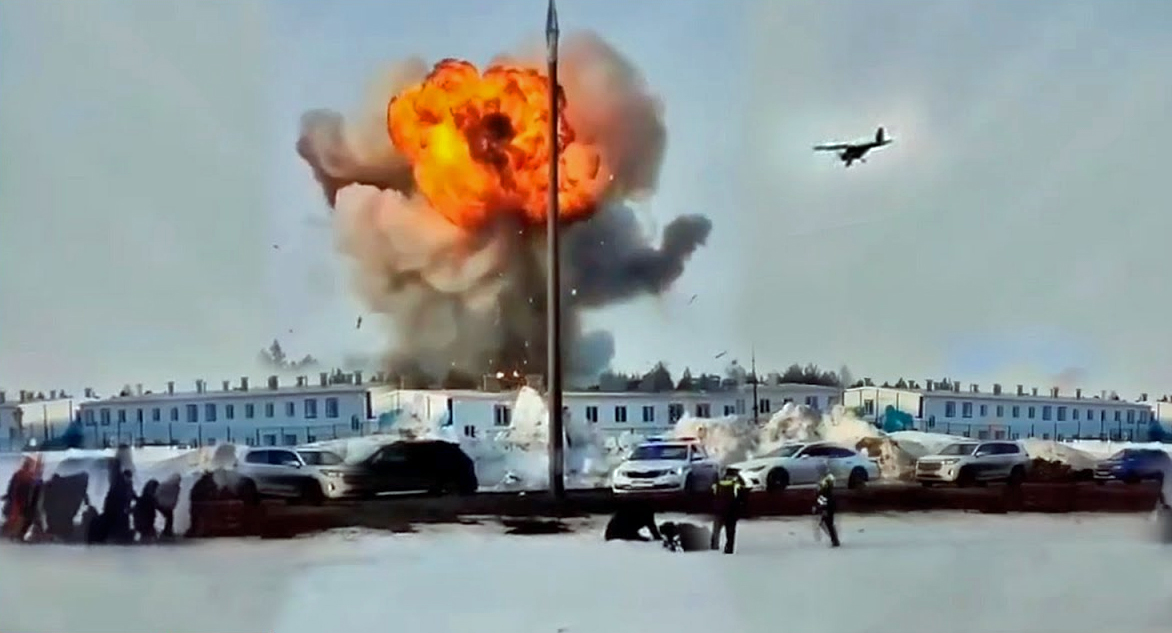Kremlin-appointed officials responsible for electricity deliveries in southwest Russia and Russia-occupied eastern Ukraine on Friday were struggling to halt accelerating blackouts and prevent collapse of the regional power grid, as millions of power consumers sat in the dark or sweltered without air conditioners.
A punishing trifecta of an emergency shutdown of one of four reactors at one of Russia’s biggest nuclear power stations, record-high temperatures that meteorologists predict will last at least another week, and damage caused by Ukrainian drones targeting transformer stations was responsible for rolling black-outs, emergency shut-downs and other interruptions to service.
JOIN US ON TELEGRAM
Follow our coverage of the war on the @Kyivpost_official.
Gray-outs and power failures were reported most often in densely-populated cities and districts of Russia’s southwestern Rostov Oblast, and across the border with Ukraine in the Russia-occupied Crimea peninsula and Donetsk region – a land space roughly the size of Poland and home, prior to Russia’s invasion of Ukraine, to some eight million people.


Azerbaijan Airlines Jet Downed by Russian Missile – Euronews
A Friday statement from DonEnergo, the state-run power company delivering electricity to customers in Russia-occupied eastern Ukraine and southwest Russia said: “due to extreme rises of air temperatures to and above 39 degrees Centigrade the power grid of the joint electrical power systems South is suffering a significant load…making necessary rolling blackouts to power users.”
The statement said nothing about the nuclear accident at the Rostov nuclear power station, the single largest generator of power for the grid in southwest Russia. Customers would be informed of a return to normal services “later,” the DonEnergo statement said.
According to a July 16 statement by the Russian nuclear power monopoly, Rosatom, one of four reactors at the Rostov atomic energy station was shut down due to a turbine malfunction. Officials said there was no radiation threat and that technicians were investigating the problem. No timeline for repair was announced.
Another reactor is offline for long-term maintenance, leaving the station – with a 1.5 Gigawatt capacity responsible for about 75 percent of electricity generated in southwest Russia – at half capacity, corporate officials said on Tuesday.
Since the July 16 accident, DonEnergo has reported dozens of electricity delivery failures caused by grid overload in the cities of Rostov, Donetsk, Novocherkassk, Bataisk, Kamensk-Shakhtinskiy, Shakhty, Sal’sk, Novoshakhtinsk, Morozovsk and Gukovo.
The city Rostov-Na-Donu, home to more than one million residents and capital of Russia’s southwestern Rostov Oblast’ bordering Ukraine appeared to be particularly hard hit, suffering sixteen unplanned blackouts in districts of the city, notwithstanding mandatory halts to electricity deliveries elsewhere, in order to prevent blackouts.
Donbasenergo corporate statements on July 16-17 promised a return to normal services in three hours. By July 18-19, DonEnergo corporate messaging had ceased predicting when customers’ lights and appliances might again have power.
In Russia-occupied Crimea Evgeniy Gorlov, Kremlin-appointed vice mayor of the regional capital Simferopol, and Mikhail Razvozhaev, Kremlin-appointed mayor of the naval port city Sevastopol, in Wednesday statements said that electricity users services should be back to normal on Friday. That was not the case and power cuts and blackouts were being reported across the peninsula, Kyiv Post review of local chat groups found.
In the summer resort city Yalta, on the south coast of the Russia-occupied Crimea peninsula, local news agencies reported street lights and illumination on seaside boardwalks was switched off, to reduce load on the grid.
Yalta occupation authority Mayor Yanina Pavlenko in video comments described the power grid situation in the city as particularly difficult because – aside from the heat and nuclear reactor failure affecting the whole region – an underground high voltage trunk line had failed and needed to be dug up and repaired. She called on neighbors to be patient.
“Friends! There is no electricity. But maybe we can use this moment, as a possibilty to be with our loved ones. To talk about life. About one’s family. About love,” Pavlenko said in a candle-lit video statement.
Regional media also reported electricity shortages in the neighboring Krasnodar Krai region, in mainland Russia opposite Crimea, and rolling black-outs or emergency power shut-downs in the cities Kransodar, Stavropol, Gelenzhik, Novorossiysk and Maikop.
Official Kremlin-controlled information sources offering updates on the power cut-offs, ranging from Rosatom to DonEnergo, to officials like Razvozhayev, Pavlenko and Golov, have made no reference to weeks of Ukrainian drone strikes seemingly focusing on degrading power grid infrastructure in regions now badly short of electricity.
A Friday statement by the Ukrainian partisan group Krymsky Veter said that more than 20 power transformer substations were offline in Yalta alone, due to damage from Ukrainian drone and guerilla attacks. Kyiv Post researchers confirmed power was off in many but not all sections of the city, but could not determine the exact cause.
Ukrainian strike planners in early July appeared to expand a long-running kamikaze drone bombardment campaign against its giant northern neighbor to attempt strikes against civilian power transformer stations in west and southwest Russia.
The latest major Ukrainian wave of drone strikes clearly targeting Russia-controlled power grid infrastructure took place on July 9, when a reported 40+ robot aircraft loaded with explosives hit, or attempted to strike electricity distribution nodes in Rostov Oblast and in the neighboring Volgograd Oblast. According to Russian milbloggers, at least four power substations – infrastructure critical for handling overloads during periods of high electricity use – were hit.
You can also highlight the text and press Ctrl + Enter






